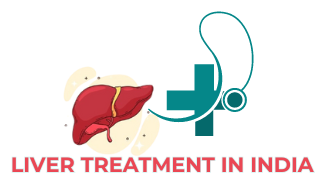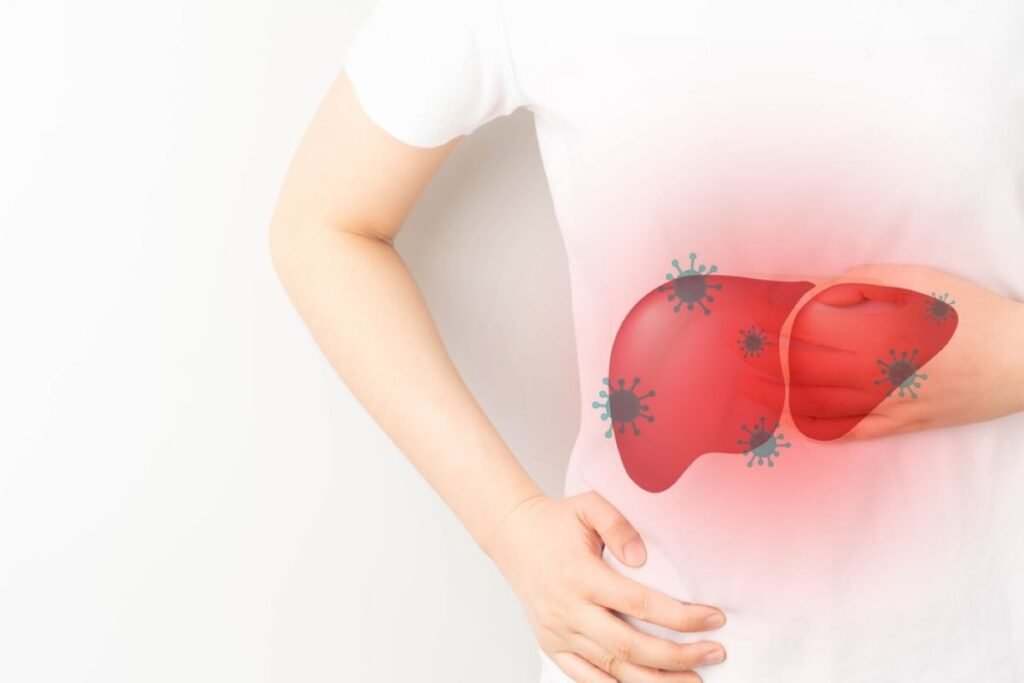Understanding the Liver-Skin Axis And Its Significance
The liver-skin axis, which refers to the connection between the liver and skin, is a captivating aspect of human health that highlights the intricate interconnection of our bodily systems. Essentially, this axis signifies the direct communication and relationship between the liver, the body’s primary detoxification organ, and the skin, the largest organ in the body. The importance of liver health in skin care cannot be overstatedThe liver plays a crucial role in filtering toxins, metabolizing drugs, and maintaining hormone balance, all of which can significantly impact the appearance and overall health of our skin. When the liver functions at its best, it plays a crucial role in promoting skin health, leading to a clear and radiant complexion.
Overview of Liver Function in Detoxification and Metabolism
The liver plays a crucial role in detoxification and metabolism in the body. It is responsible for filtering and detoxifying harmful substances, such as drugs, alcohol, and metabolic byproducts. The liver processes these substances by breaking them down into more manageable compounds that can be eliminated from the body. In terms of metabolism, the liver is involved in various metabolic processes, such as synthesizing proteins, carbohydrates, and fats. It also stores and releases glucose as needed to maintain blood sugar levels. Additionally, the liver plays a key role in metabolizing nutrients from food to provide energy for the body.
Common Skin Conditions Associated with Liver Dysfunction
When determining a patient’s eligibility for a Liver transplantation i
Some common skin conditions associated with liver dysfunction include jaundice, which can cause yellowing of the skin and eyes due to excess bilirubin in the blood. Pruritus, or itching, can also occur in liver disease. Other skin manifestations include spider angiomas, palmar erythema (red palms), and psoriasis-like skin changes. Let’s discuss these conditions in more detail:
n elderly, the pre-liver transplant evaluation procedure is essential. This thorough assessment takes into account a range of physical, psychological, and social issues in order to guarantee the best possible patient selection and results following transplantation. Age-related factors are important in this situation because they help weigh the advantages of transplantation against the hazards that come with getting older. The relevance of age-related criteria in the pre-liver transplant evaluation process is examined in this title, which also discusses how it may affect patient care and clinical practice.
Jaundice
Jaundice is a yellowing of the skin and the whites of the eyes. It occurs due to an excess of bilirubin, a yellow pigment produced during the breakdown of red blood cells. In the case of liver dysfunction, bilirubin may not be properly metabolized and excreted, leading to its accumulation in the body and subsequent yellowing of the skin and eyes. This is a classic sign of liver disease and indicates impaired liver function.
Pruritus
Pruritus refers to intense itching of the skin. In the context of liver dysfunction, pruritus can occur due to the accumulation of bile salts under the skin. The exact mechanism is not fully understood, but it is believed that the buildup of certain substances normally processed by the liver can cause irritation and itching of the skin. This symptom can be distressing for individuals with liver disease and can significantly impact their quality of life.
Spider Angiomas
Spider angiomas, also known as spider nevi, are small, red, spider-like blood vessels that appear on the skin. These are commonly associated with liver dysfunction, particularly in conditions such as cirrhosis. The exact cause of their appearance is not fully understood, but their presence can serve as a visible indicator of underlying liver disease. These distinctive skin lesions are often seen on the face, neck, and upper torso.
Palmar Erythema
Palmar erythema refers to the redness of the palms of the hands. In the context of liver dysfunction, said by liver expert doctor, this skin condition can manifest as a reddish discoloration of the palms. The precise mechanism behind its occurrence is not completely understood, but it is thought to be related to changes in the blood flow and circulation. It is a notable clinical sign that can be associated with liver diseases such as cirrhosis.
Xanthomas
Xanthomas are fatty deposits that accumulate under the skin. While not exclusive to liver dysfunction, they can be associated with conditions that cause abnormal lipid metabolism, which may include certain liver disorders. These yellowish nodules or plaques can appear in various locations on the body and may indicate underlying metabolic disturbances often related to liver dysfunction. Determining the precise cause of xanthomas typically involves thorough medical evaluation and diagnostic testing.
Mechanisms Behind Liver-Related Skin Symptoms
We currently have a strong understanding of the liver-skin axis and its significance. Now, we will explore the mechanisms behind liver-related skin manifestations, as understanding these mechanisms can assist in effectively identifying and managing liver-related skin symptoms. Liver-related skin symptoms can be caused by various mechanisms, consider the followings:
Bilirubin Accumulation and Jaundice Formation
In cases of liver dysfunction, impaired bilirubin metabolism can lead to its accumulation in the body, resulting in the characteristic yellowing of the skin and the whites of the eyes known as jaundice. Bilirubin is a yellow pigment formed during the breakdown of red blood cells. When the liver is unable to process and excrete bilirubin effectively, it builds up in the body, leading to the visual manifestation of jaundice.
Impaired Detoxification Leading to Skin Toxicity
Liver-related skin symptoms can occur when the liver is unable to effectively detoxify the body, leading to a buildup of toxins that can manifest in the skin. The liver plays a crucial role in filtering out toxins from the blood and breaking them down for elimination. When the liver is not functioning properly, these toxins can accumulate and cause various skin issues such as jaundice, itching, rashes, and acne. It’s important to address liver health through proper nutrition, hydration, and medical treatment to improve detoxification and alleviate skin symptoms.
Altered Blood Flow and Circulation Affecting Skin Appearance
Altered blood flow and circulation can indeed be consider as the Indicators of liver health from skin appearance as it affect the appearance of the skin in individuals with liver issues. The liver plays a crucial role in filtering toxins from the blood, and when it becomes compromised, it can lead to a buildup of toxins in the bloodstream. This can result in various skin manifestations such as jaundice, itching, rashes, spider angiomas (spider veins), palmar erythema (red palms), and bruising. Altered blood flow and circulation can also contribute to the development of conditions like psoriasis and eczema in individuals with liver disease.
Inflammatory Processes Contributing to Skin Inflammation and Itching
When the liver is not functioning properly, it can lead to the buildup of toxins in the body, which can cause skin inflammation and itching. One mechanism behind liver-related skin manifestations is the release of inflammatory cytokines. When the liver is damaged, it can release cytokines that trigger an inflammatory response in the body. This inflammation can manifest as redness, swelling, and itching on the skin. Another mechanism is the disruption of bile production. The liver produces bile, which helps to break down fats in the body. When the liver is not functioning properly, it can lead to a buildup of bile acids in the body, which can cause itching and other skin symptoms.
It is clear that the liver-skin axis and its significance cannot be ignored. Taking care of your liver through a healthy diet, regular exercise, and avoiding harmful substances is crucial for maintaining not just your liver but also your skin’s health. Remember, a healthy liver means healthy skin. If you suspect any liver issues, don’t hesitate to seek help from the best liver transplant doctor in india. Our team as Liver Treatment in India is dedicated to providing high-quality care and support for individuals seeking guidance and information on liver treatment. Overall, trust in the expertise and care provided by experienced liver surgeon who can guide you towards optimal liver health and overall well-being. Your liver and skin will thank you for it!

